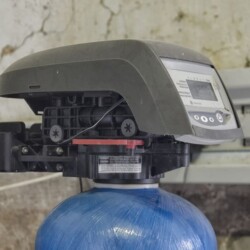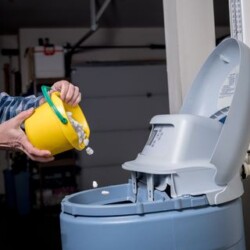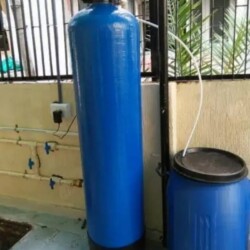How it works
Whole-house water softeners come in a variety of sizes and styles to accommodate the size of your home and family. The softener is installed in the basement, garage, utility closet or wherever water enters the house.
A typical water softener consists of a tall, narrow water-softener tank, and a short, wide brine tank. The softener tank is connected to the home’s water-supply line. A small-diameter fill tube connects the brine tank to the softener tank. And a discharge hose runs from the softener tank to a nearby drainpipe or drywell.
The softener tank is filled with specially formulated resin beads, which are permanently sealed inside the tank. The brine tank has a removable lid so you can fill it with salt .
Here’s a quick explanation of how the system works:
Water enters the top of the water-softener tank and percolates down through the resin beads. The resin has a negative charge, which attracts the positively charged minerals in the water (a process known as ion exchange). The mineral deposits cling to the resin and the now-softened water exits the softener tank and flows throughout the house.

Sooner or later, however, the beads reach maximum capacity and can’t attract any more mineral ions. At that point, the softener tank must be regenerated, or, flushed clean. That’s where the brine tank comes in. When it reaches the pre-programmed setting, regeneration automatically begins.
During regeneration, salty water from the brine tank flows up the fill tube and into the softener tank. A rinse cycle commences and the salty water washes the mineral deposits off the resin beads. The regenerated water—and all those destructive mineral deposits—are flushed out the discharge hose. The system then automatically reverts back to softening the incoming water.



